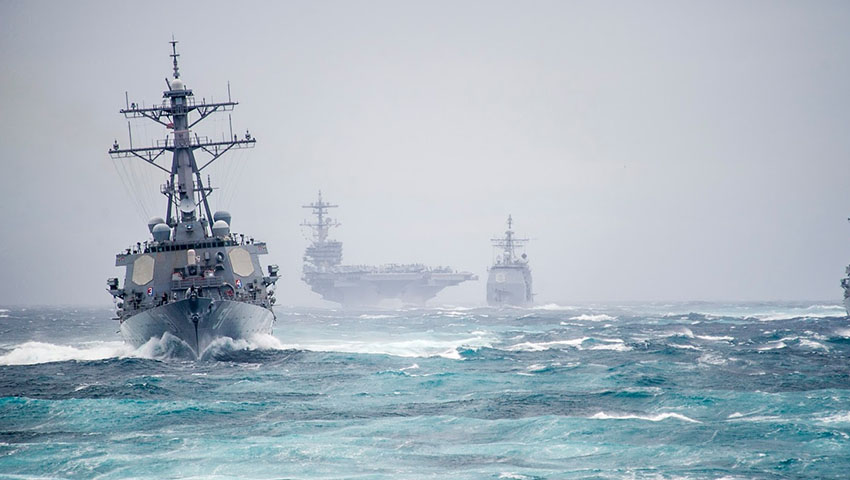French carrier strike group and its flagship, the aircraft carrier Charles de Gaulle, trained with the Standing NATO Maritime Group One (SNMG1) for four days last week.
The combined exercises ran from 19-22 March off the east coast of Denmark. The navies of Belgium, Denmark, France, Germany, Norway, Portugal, Spain, and the UK all contributed personnel and warships.
Naval exercises involving a large number of ships from various countries are complex and challenging, but the modern naval strategic arena places a heavy emphasis on interoperability.
Regular training and exercises among NATO-forces and allied nations are therefore important to maintain high readiness.
The aircraft carrier Charles de Gaulle and its strike group left France in January for operations in the Mediterranean Sea. The group has now also deployed to the Atlantic Ocean and the North Sea.
SNMG1 Commander, Yngve Skoglund, said, “The interaction with the French carrier strike group provides valuable opportunities for both the carrier strike group and us. The ability to train and develop our procedures, communication and interaction is ultimately what ties us together as allied forces. It enhances our readiness and our ability to fight war. Obviously it also enhances the cohesion within the alliance. Together NATO allies constitute a powerful naval force.”
SNMG1 is one of four standing forces that comprise the maritime component of the Very High Readiness Joint Task Force (VJTF), which is part of the NATO Response Force (NRF). The force currently consists of its flagship, the Norwegian frigate HNoMS Otto Sverdrup, the British frigate HMS Sutherland, the Danish warship HDMS Absalon and the German oiler Rhön.
Skoglund – himself a member of the Royal Norwegian Navy – took over the command of SNMG1 from US Navy Rear Admiral Edward Cashman late last year.






